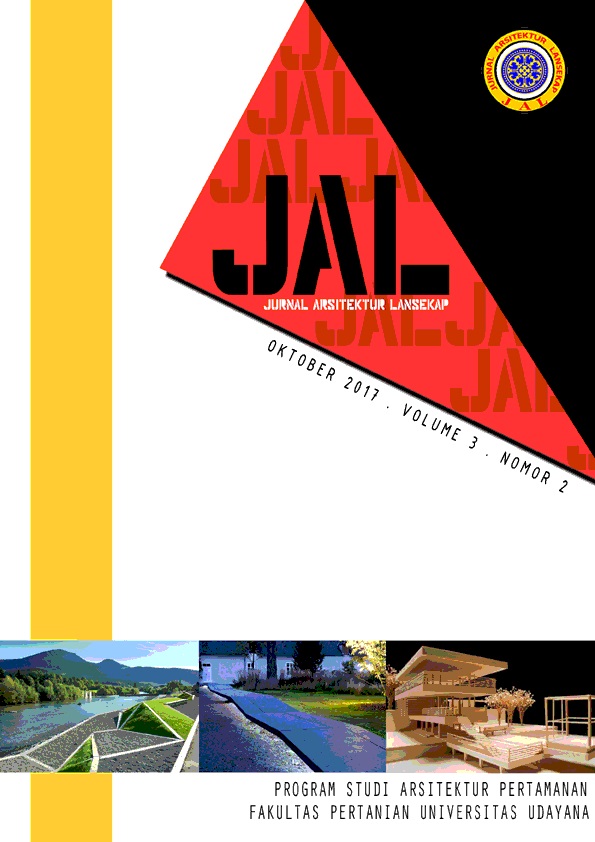Perencanaan Lansekap Desa Pertima sebagai Desa Wisata Berkelanjutan di Kecamatan Karangasem Kabupaten Karangasem
Abstract
Pertima Village is a village in the province of Bali which has 13 sub village and three indigenous villages which has potency to serve as a tourist village, so it needs to be planned. Tourist villlage is a place which has certain characteristics and values that can be special attraction for tourists with a special interest in rural life. This study aims to determine some potencies and problems which exist in the Pertima Village to develop this village as a tourist village by implementing concept of "Sustainable Tourism Village". The method used in this study were field survey with observation, interview, questionnaire and study literature technique. There were five stages conducted in this research such as site preparation, inventory, analysis, synthesis and planning. The landscape planing were done by using the natural and culture resource approach. Sustainable tourist village apllied was a tourist village that does not pollute or ruin the environment, economically profitable and socially acceptable.
Downloads
An author who publishes in the Jurnal Arsitektur Lansekap (JAL) agrees to the following terms:
- Author retains the copyright and grants the journal the right of first publication of the work simultaneously licensed under the Creative Commons Attribution-ShareAlike 4.0 License that allows others to share the work with an acknowledgement of the work's authorship and initial publication in this journal
- Author is able to enter into separate, additional contractual arrangements for the non-exclusive distribution of the journal's published version of the work (e.g., post it to an institutional repository or publish it in a book) with the acknowledgement of its initial publication in this journal.
- Author is permitted and encouraged to post his/her work online (e.g., in institutional repositories or on their website) prior to and during the submission process, as it can lead to productive exchanges, as well as earlier and greater citation of the published work (See The Effect of Open Access).
Read more about the Creative Commons Attribution-ShareAlike 4.0 Licence here: https://creativecommons.org/licenses/by-sa/4.0/.







